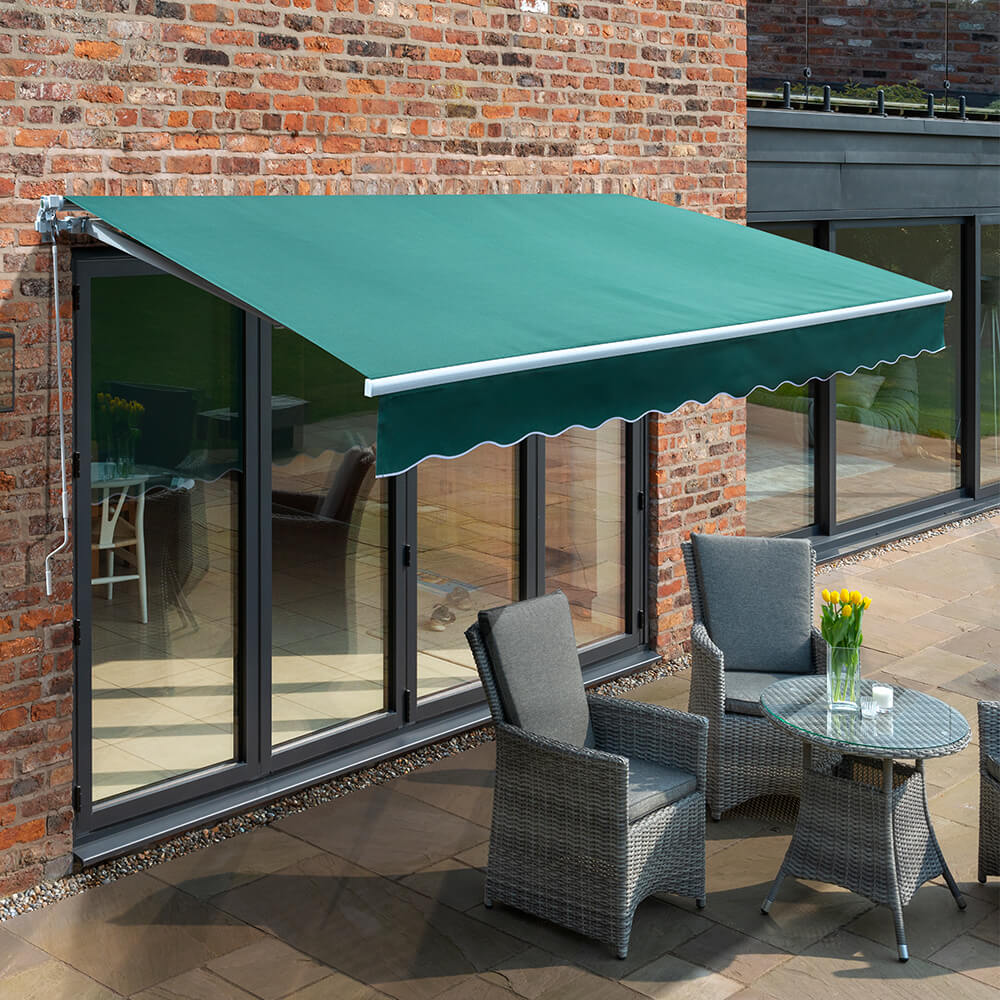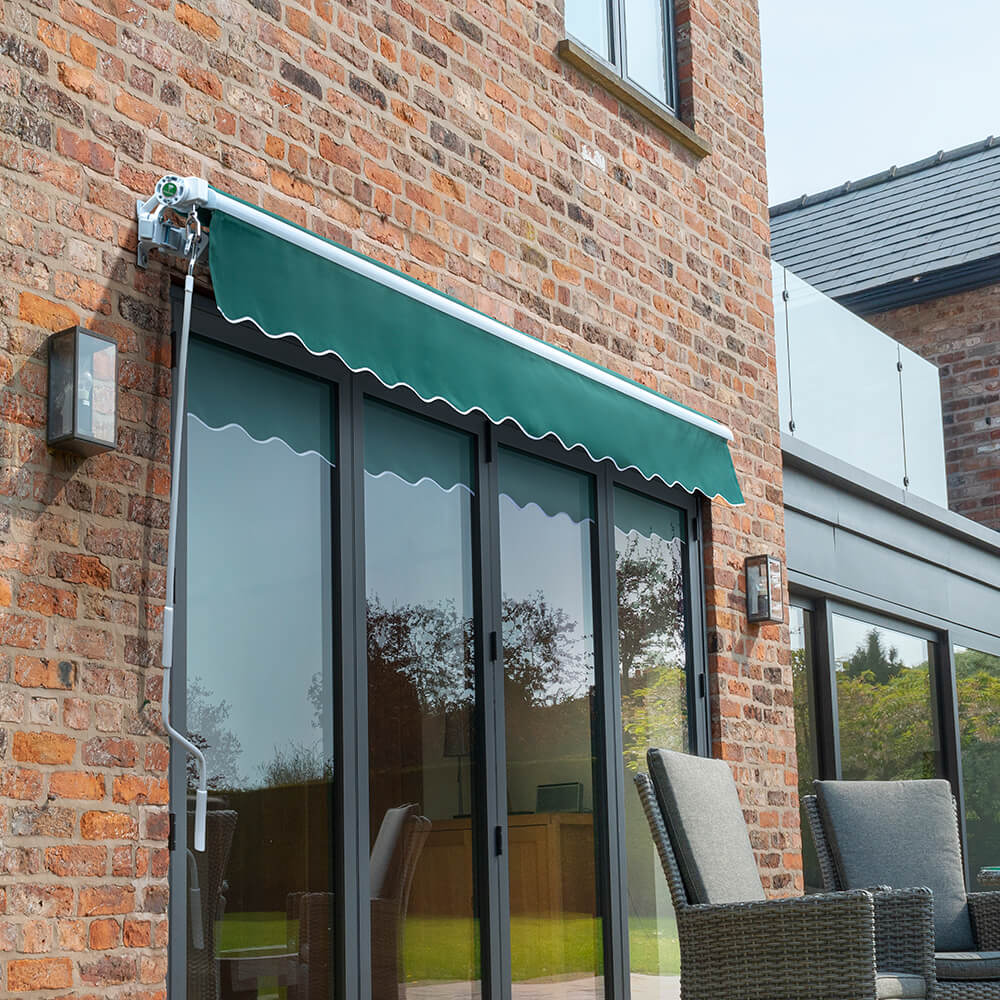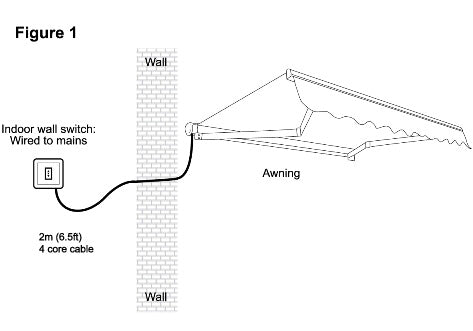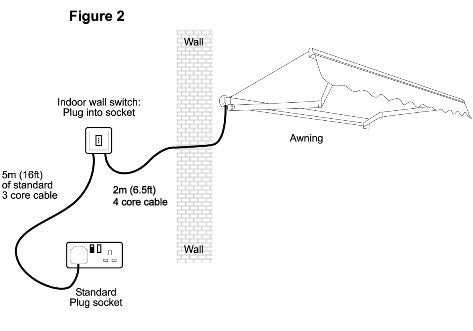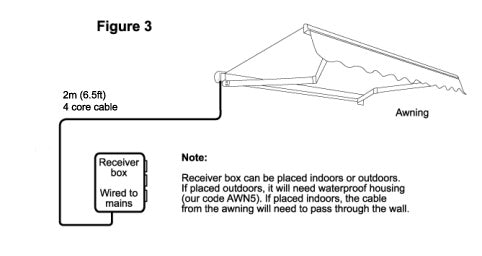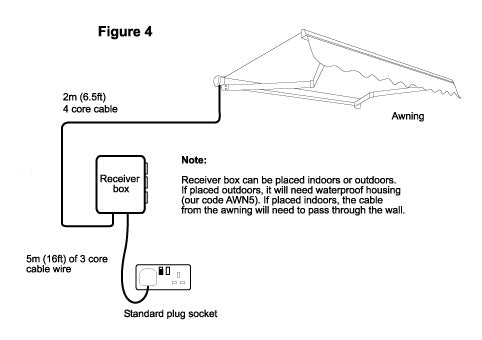Installation of Electric Awnings
Our awnings can either be fitted with a plug or wired into the mains socket. If you choose to wire into the mains you should consult a qualified electrician. The following summarizes how the wiring works for the remote control kit and also the indoor wall switch.
Control options: wall switch, remote control and/or automated wind sensor
Primrose electrical awnings give you maximum flexibility and choice, while at the same time being easy and cheap to install. When you purchase your awning you can have an indoor wall switch only or a indoor wall switch with remote controls. You can also buy an optional wind, sun and rain sensor to go with the remote control kit. The following summarizes how the wiring works for each option.
Electrical Awnings Overview
The awnings have 1.5 meters of 4 core cable coming out of them. The reason the cable coming from the awning is 4 core cable is because this allows for two separate electrical circuits – one circuit for opening the awning and one for retracting it. This 4 core cable wires directly into the wall switch. A standard 3 core mains cable (3 meters supplied) comes out of the wall switch to your mains. You can simply attach a standard 13 amp plug to this mains cable, or it can be wired directly into your mains. Indoor wall switch only(see Figures 1 and 2)
****Note that you will need to drill a hole through the wall or find some other way of feeding the wires from the outdoor awning to the indoor wall switch.
Remote control kit
The awnings have 1.5 metres of what is known as 4 core cable coming out of them. The cable contains two separate circuits one circuit for opening the awning and one for retracting it.
FAQ
What does Part P mean?
Work carried out on an electrical installation in a domestic property and any surrounding land and out buildings is now a controlled service under the terms of the Building regulations. Those carrying out the work must demonstrate to the appropriate authority that the installation is fit for purpose, safe, tested and properly documented and certified. In order to comply with Part P, some work must be notified to the Local Council Building Control Department.
Do I need to worry about Part P with respect to installing my awning?
- Installation by professional electrician
If the installation is carried out by a professional electrician then the electrician is responsible for ensuring compliance with all necessary regulations you do not have to worry about Part P. - DIY installation
If you install the awning yourself, you may need to notify your Local Council Building Control Department.It is our understanding that if you simply plug the awning into an existing socket, either indoors or out, then in general there is no need for notification. However every situation is different and you may wish to check by telephoning your local building regulations authority. If you wire the awning into the mains, then the work may well be notifiable, particularly if you wire it into an external circuit, or into the kitchen or other location defined as ☆special☆ under the regulations. We recommend you check before installing the awning by telephoning your local building regulations authority.
